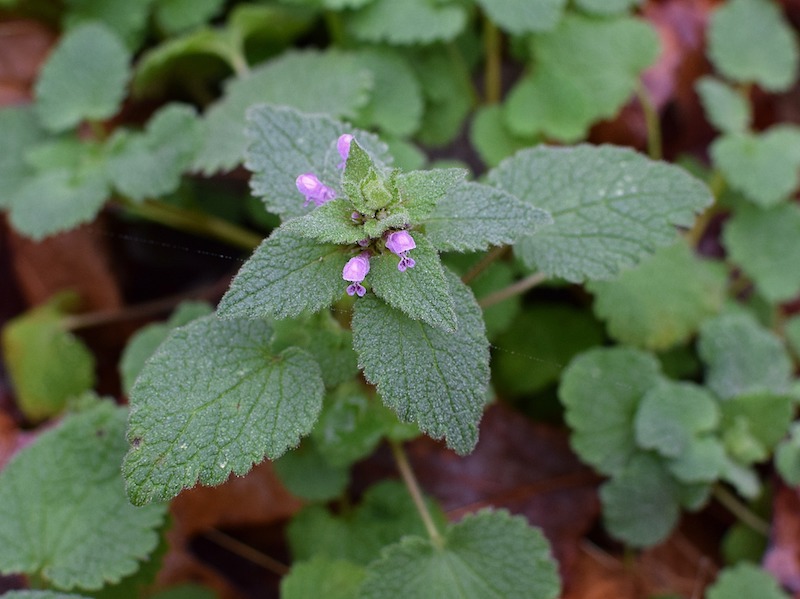Dead Nettle is a low-maintenance perennial that boasts showy variegated foliage and tiny blooms during the spring and early summer. This plant thrives in full to partial shade, making it susceptible to various diseases that will impact the plant’s health. Fortunately, all of these diseases are treatable and preventable.

Dead Nettle Downy Mildew
Downy mildew in a mold that grows on foliage and thrives in damp conditions. This disease can quickly spread to engulf an entire plant. If Dead Nettle is not treated, the plant will die.
Identifying Downy Mildew
Downy mildew appears on Dead Nettle as yellow, purple, or brown spots on the leaves. The spots spread to cover the entire leaf before the foliage turns brown and dies. The underside of an infected leaf will be covered in a gray, fuzzy mold.
Treating Downy Mildew
Treat downy mildew on Dead Nettle by removing and destroying infected leaves. Spray the plant with a fungicide to kill any remaining mildew. Go through several rounds of treatment to ensure the disease will not return. Thin the plants in the fall to improve airflow, which will reduce the risk of downy mildew.
Dead Nettle Fungal Leaf Spot
Fungal leaf spot on Dead Nettle is caused by fungal spores mixed with damp vegetation. Dead Nettle lives in shady areas that are also ideal for the growth of fungal leaf spots.
Identifying Fungal Leaf Spot
Fungal leaf spots are white spots encircled with a brown or black ring. Multiple spots will appear on a single leaf. Infected leaves will eventually turn brown and wither. If left untreated, fungal leaf spot can kill the entire plant.
Treating Fungal Leaf Spot
Treat fungal leaf spots on Dead Nettle by pruning infected foliage. Destroy the vegetation to contain the spread, and spray the Dead Nettle plant with a fungicide. Prevent future outbreaks of fungal leaf spots by transplanting and thinning Dead Nettle. Crowded plants are more likely to develop a fungal disease, so thinning the plants increases air circulation, allowing the foliage and soil to dry.
Dead Nettle Botrytis
Botrytis is a fungal mold that is sometimes known as gray mold. Wet, humid conditions make Dead Nettle susceptible to botrytis. This plant thrives in low light, which is also conducive to mold, like botrytis.
Identifying Botrytis
Botrytis looks like a fuzzy, gray mold that engulfs the leaves and flowers. Buds and flowers will be deformed and turn brown.
Treating Botrytis
Treat Botrytis on Dead Nettle by removing and destroying infected foliage and blooms. Apply a fungicide to treat the plant further. Prevent botrytis by thinning Dead Nettle clumps to improve airflow. Increased air circulation around the vegetation will reduce the risk of mold.
Dead Nettle Disease Chart
|
Disease |
Identifying |
Treating |
|
Downy Mildew |
Yellow, purple, brown spots |
Prune/discard stems and improve air circulation |
|
Fungal Leaf Spot |
Dark spots on leaves |
Fungicides & air circulation |
|
Botrytis |
Gray mold and deformed, brown flowers |
Fungicides & air circulation |
Sources: "Lamium - downy mildew." Center for Agriculture, Food, and the Environment, University of Massachusetts Amherst. ag.umass.edu
 |
Author Alison Cotsonas - Published 05-16-2023 |
